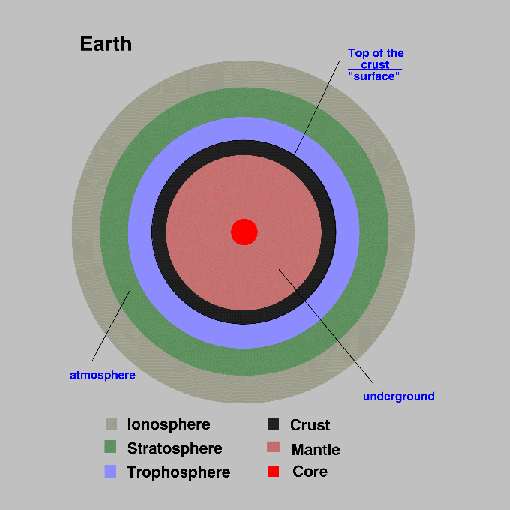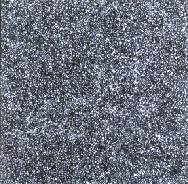The Solar Photosphere
The Sun is made up of layers of material, like a baseball or rubber band ball. The photosphere is the lowest layer of the solar atmosphere. It is essentially the solar "surface" that we see when we look at the Sun in "white" (i.e. regular, or visible) light. When we observe sunspots and faculae (bright little cloud-like features) we are observing them in the photosphere.Like the Sun, our planet, Earth, is made up of layers, too. The thickest or most dense material on the Earth is in the very middle of our planet -- the core. The thinnest is at the very top of our atmosphere - right next to outer space. The same is true of the Sun. But, the layers in the Sun and the Earth are much different:
- Earth:
- core, mantle, crust, troposphere, stratosphere, ionosphere
- Sun:
- core, radiative zone, convection zone, photosphere, chromosphere, corona
If we looked at a slice through the middle of the Earth, it would look something like this:

A slice through the middle of the Sun would show layers too, but they would be different than Earth's:
.
The photosphere of the Sun is like the crust of the Earth in some ways. Both the photosphere and the crust are many miles thick. The top of the crust is the surface of the Earth. If we could stand on the moon and look at the Earth, we would see it's surface -- its crust. If we look at the Sun, we see the photosphere. (DO NOT LOOK DIRECTLY AT THE SUN! Our pictures of the Sun are taken through a telescope with a special filter.) We walk around on the surface of the Earth. Not so for the Sun. The photosphere is not solid. You would fall right through! ...and the Sun is very hot (about 5,000 degrees Centigrade). Ouch!
Most stars have photospheres. So, the image of the solar photosphere is like something you would see if you were able to fly over almost any star and look down on it. It's a picture of a star-scape!

Granulation
The surface of the Sun, like the surface of a boiling pot, is constantly changing. When we talk about solar granulation, we mean the cell structure, or bubbly look, of the photosphere. The "boiling" nature of the Sun allows heat from the core to be brought up through the convection zone and into the photosphere, just like heat from the bottom of a pan ends up heaing the entire contents (and the air above it!).Would you like to learn more about solar granulation? Take our Solar Granulation Quick Quiz.
https://solar-center.stanford.edu/hidden-pic/photosphere.html